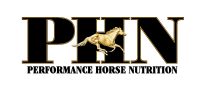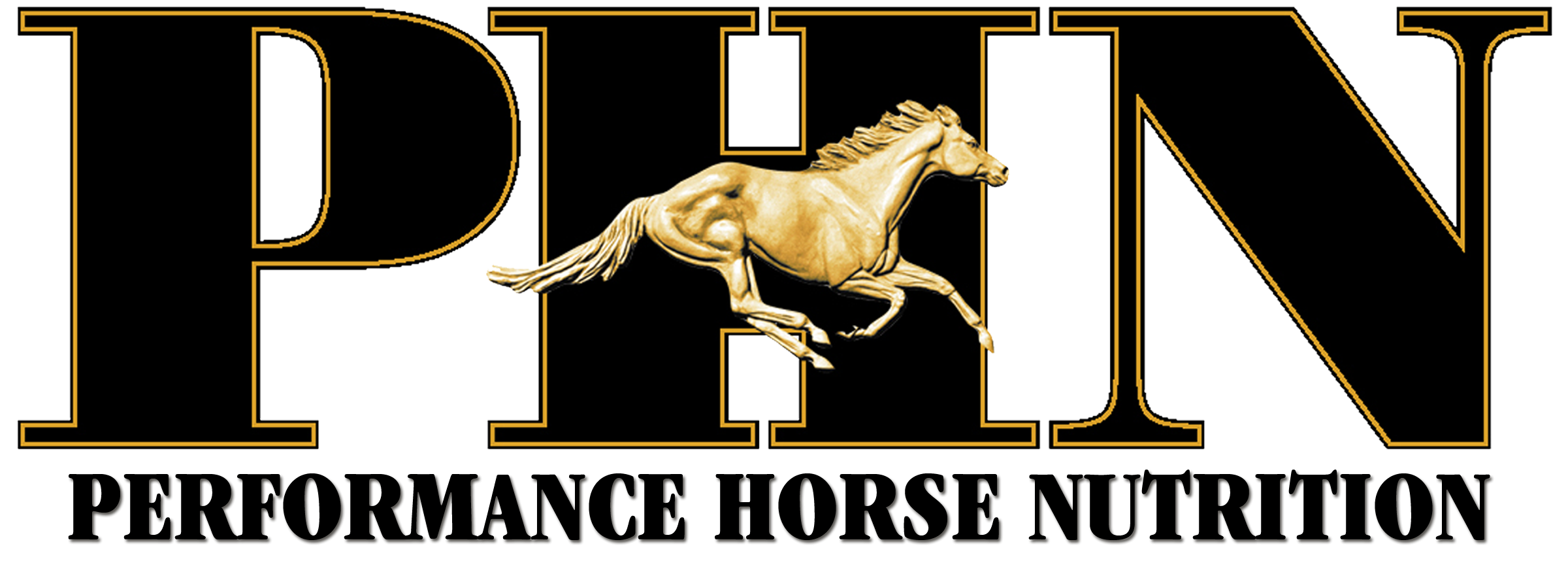FEEDING THE
SICK OR INJURED HORSE
-performance horse NUTRITION-
DECEMBER 2018

Written by
Dr. Stephen Duren – Performance Horse Nutrition
The competition season is in full swing; your horse is fit and performing well. Then it happens, the horse takes a bad step and pulls up lame. Your immediate concern is the well-being of the horse.
What is the nature of the injury?
How severe is the injury?
How much competition time will the horse miss?
All logical questions, but another question to consider is how to feed this horse to speed recovery?
Injuries come in many forms. Bone fractures, skeletal lameness, muscle injuries, tendon injures, ligament injuries and a host of others. The net result of these injuries is the horse immediately stops training. The horse is often transported to a facility where it is confined to a stall for rest. Sickness or disease, much like injuries, can also result in lost competition and training time and stall rest. The horse’s body responds to both injury and disease in a similar manner. The immediate visible response is the horse has a depressed appetite. This is usually the result of pain from injury or fever from disease. Lack of appetite and the bodies need for nutrients to heal often results in weight loss. This lack of appetite forces the body into a “catabolic” state. Simply put, catabolism is when the horse breaks down its’ own body tissues to provide energy. First the body will break down tissue stores of glycogen (sugar) and fat. Ultimately, the horse will break down protein from muscle and internal organs to fuel energy requirements. Visually the horse not only becomes thin, but they lose muscle mass from the top-line and the hindquarters. This tissue break down begins very soon after the injury or disease and persists until the injury or disease resolves. In a normal healthy horse, 90% of the calorie requirements come from fat stores within the body and another 5-8% comes from body protein. In an injured or sick horse, 50% of the calories come from fat stores, 20% from glycogen stores and 30% of the calories come from the breakdown of protein, muscle and internal organs. The immediate goal in feeding a sick or injured horse is to reverse catabolism or the breakdown of body tissue. The first step is to restore the horses’ appetite. This can be accomplished by medicating pain symptoms and resolving any infection causing fever. Once the horse is willing to eat we can address the specific nutrient requirements needed for the healing process.
Feeding horses that are sick or injured is not just a matter of providing hay and water. Sick or injured horses have elevated energy and protein requirements. The energy requirements for an 1100 lb sick or injured horse vary from 18 to 22 Mcal per day. The protein requirements for a sick or injured horse are estimated to be 25% higher than a horse that is simply resting. Together, the nutrient requirements for energy and protein for a sick or injured horse are similar to the requirements of a healthy horse in light work. So we have an injured horse confined to a stall with elevated nutrient requirements. This injured horse is accustom to daily exercise but is not physically able to exercise. We also want to keep this horse calm and quiet to prevent further injury. These challenges make feeding the sick or injured horse difficult.
Let’s first start with the energy (calorie) needs of the injured or sick horse. What is the best way to provide calories without the horse bouncing off the walls with hyper behavior? Begin by providing the horse with grass hay on a free-choice basis. Grass hay will provide calories in a slow release manner since it is fermented within the digestive tract. Further, grass hay is an ingredient that helps occupy the time of the horse since it takes hours to consume and chew the hay. In addition to grass hay, a small amount (0.5% to 1% of body weight) of alfalfa hay, pellets or cubes should also be fed. Alfalfa contains more calories per pound compared with grass hay and it is a great source of quality protein and calcium. This protein and calcium are very important in the healing process. Soaked beet pulp can be fed to sick or injured horses as an additional source of calories. Beet pulp contains the same amount of calories, on a dry weight basis, as an equal weight of oats. However, beet pulp contains minimal amounts of sugar and starch compared to oats. So feeding soaked beet pulp instead of oats will minimize the sugar content of the diet and help control hyper behavior. Dietary fat in the form of vegetable oil (soybean oil or canola oil) is also a highly digestible, non-sugar energy source. Vegetable oil contains roughly three times as many digestible calories as any other feed ingredient with absolutely no sugar. The energy (calorie) content of the diet is the only dietary factor that adequacy can be judged by looking at the horse. If you provide the horse with too many calories, it gains weight and eventually becomes fat. On the other hand, if you do not feed enough calories the horse will lose weight and become thin. We want horses that are recovering from injury or disease in a body condition score of 5 on a 1 to 9 scoring system. In a horse with a body condition score of 5, the ribs will not be visible, but they can easily be felt when you touch the horse. Horses that are thinner than a body condition score of 5 will take longer to heal since they lack nutrient intake and body reserves.
The protein requirements of a sick or injured horse are elevated by 25% over maintenance requirements. Protein is a vital component of muscle, bone and most soft tissues, and it is a vital nutrient for the healing process. Protein is a component of most feed ingredients with the exception of vegetable oil. Extra protein is most often supplied in the diet with alfalfa hay, soybean meal and ground flax. Soybean meal is typically not fed as a single ingredient, but instead it is found in most grain concentrates and supplement pellets. Since feeds that contain grain also contain large amounts of sugar, which may make cause erratic behavior in horses, a low-intake, high protein supplement pellet is the best means of providing high quality soy protein to sick or injured horses. The final component that must be addressed in the diet is the intake of vitamins and minerals. Vitamins and minerals function as building blocks for the repair of damaged tissue. They also function as co-factors to facilitate the chemical reactions to synthesize or repair tissue within the body. Critical minerals and vitamins include calcium, phosphorus, copper, zinc, selenium, and vitamins A, D and E.
Finally, the management of the horse is critical to the recovery process. We have discussed putting together a diet that provides adequate energy and protein with the use of free-choice grass hay, alfalfa hay (0.5 to 1% of BW), beet pulp, vegetable oil and a vitamin mineral pellet. We have purposely eliminated or at least minimized the grain component of the diet to control the sugar and starch intake of the horse. This should help to control some of the hyper behavior often seen in horses confined to stalls. The final management component to help injured horses heal is to keep the horse active with hand-walking, grazing and light exercise as soon as the attending veterinarian gives approval. This exercise will help to stop muscle protein loss and will improve the attitude of sick or injured horses. In addition, any grazing the horse is allowed to do will provide a source of both energy and protein. So the next time your horse should have the unfortunate fate of becoming sick or injured, modify the diet as described to help the horse recover quickly.

